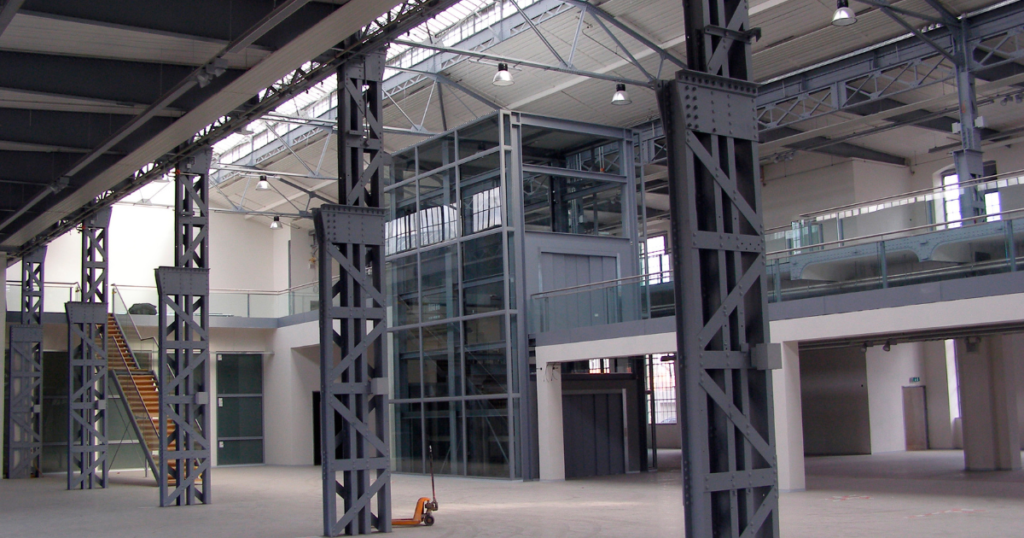The current analysis of industrial real estate trends highlights an uptick in vacancy rates, reaching 5.2% in March due to increased new supply. Sales volumes have surged, with notable transactions in the Bay Area and Chicago amounting to $10 billion in Q1 2024. Economic indicators like inflation rates and supply chain disruptions strongly influence market performance. Significant rental growth has been observed in Western and Southern regions, driving demand. For further insights into the intricate dynamics of this evolving market, explore the impact of notable transactions, emerging trends in different regions, and the steady rise in rent prices and sales activity.
Current Industrial Vacancy Rate Trends
The industrial real estate sector is currently experiencing a notable increase in vacancy rates, reaching 5.2% in March, reflecting the growing availability of industrial properties in the market. This rise in vacancy rates is primarily driven by the historic levels of new supply entering the industrial sector. With vacancy rates up by 230 basis points, there is a clear trend towards higher availability of industrial properties, signaling a shift in the market dynamics.
The influx of new supply is reshaping the industrial real estate landscape, influencing factors such as rental prices and lease negotiations. Investors and stakeholders in the industrial sector need to closely monitor these vacancy rate trends to make informed decisions regarding their portfolios. Understanding the current state of vacancy rates is essential for strategizing effectively in a market where availability plays a significant role in shaping investment opportunities and operational decisions.
The industrial real estate sector is witnessing significant changes, and staying informed about vacancy rate trends is key to successfully adapting to these shifts.
Sales Volume Analysis by Region
In the first quarter of 2024, significant industrial sales volumes were observed in the Bay Area and Chicago. Regional markets in the Western, Midwestern, Southern, and Northeastern regions also displayed varying levels of industrial sales activity. Industrial transactions amounted to $10 billion during this period, indicating a robust market performance.
Notable fluctuations in sales prices and volumes were witnessed in specific regions, highlighting the dynamic nature of the industrial real estate sector. The variations in sales volumes across different regions underscore the diverse market conditions and shifts in demand. Investors and industry players should closely monitor these regional trends to identify opportunities and tailor their strategies accordingly.
- The Bay Area and Chicago witnessed substantial industrial sales volumes.
- Regional markets in the Western, Midwestern, Southern, and Northeastern regions exhibited varying levels of industrial sales activity.
- Total industrial transactions reached $10 billion in the first quarter of 2024.
Impact of Economic Indicators on Market
Following the analysis of regional sales volumes in the industrial real estate sector, it is evident that the market’s performance is intricately linked to various economic indicators, particularly those relating to inflation and supply chain disruptions. Industrial real estate is markedly influenced by economic factors such as inflation rates, which can impact construction costs, property values, and rental prices.
Supply chain disruptions, like those seen in recent global shipping issues, affect the flow of goods and materials, consequently impacting demand for industrial spaces. These disruptions can lead to delays in construction projects, affecting vacancy rates and rental yields in the industrial real estate market.
Hence, investors, developers, and occupiers need to closely monitor economic indicators and supply chain trends to make informed decisions and adapt their strategies to mitigate risks and capitalize on opportunities in the dynamic industrial real estate landscape.
Notable Transactions Influencing National Figures
Prominent industrial transactions at a national level have greatly shaped market metrics and highlighted the sector’s importance. Notable transactions in the industrial real estate market have profoundly influenced national figures, underscoring the sector’s dynamism and impact on overall market performance.
The following insights further elucidate the significance of these transactions:
- Diverse Geographic Impact: Transactions in major industrial hubs such as the Bay Area and Chicago have driven substantial sales volumes, showcasing regional variations in market activity.
- Market Resilience: Despite economic fluctuations, industrial sales transactions have remained robust, indicating the sector’s resilience and attractiveness to investors.
- Strategic Implications: The flow of industrial transactions not only impacts sales volumes but also plays a pivotal role in shaping vacancy rates and market dynamics, emphasizing the strategic importance of these transactions in the industrial real estate landscape.
Emerging Market Trends in Western Regions
Amidst a dynamic industrial real estate landscape, the Western regions have witnessed a notable surge in key market indicators, signaling the emergence of compelling trends in the sector.
Industrial rents in the Western regions saw a remarkable increase of 7.3% year-over-year, reaching $7.85 per square foot in March. Additionally, vacancy rates in Western markets hit 5.2% during the same period, reflecting the dynamism of the industrial real estate landscape in these areas.
The region also displayed a robust development pipeline with a substantial 405.9 million square feet of new industrial supply in March, indicating a high level of development activity.
Significant industrial transactions in key areas like the Bay Area and Chicago significantly contributed to the total transaction volume of $10 billion in Q1 2024. These metrics underscore the strong growth and activity in the industrial real estate sector within the Western regions, making it a focal point for monitoring emerging market trends.
Analyzing Sales Volumes in Midwestern Markets
The industrial real estate sector in the Midwestern markets experienced a noteworthy uptick in sales volumes, with a total of $2.3 billion recorded in transactions during the first quarter of 2024. This surge in industrial sales volumes can be attributed to strong investor interest in Midwestern industrial properties, particularly in cities like Chicago and Detroit. Indianapolis and Columbus also contributed significantly to the region’s industrial sales, indicating a broader trend of resilience and attractiveness to industrial investors in the Midwestern markets.
Investor interest in Midwestern industrial properties drove the $2.3 billion in sales volumes.
Chicago and Detroit played a substantial role in contributing to the overall transaction activity.
Indianapolis and Columbus also showcased notable industrial sales performance in the region.
This robust sales activity underscores the growing appeal of the Midwestern markets for industrial real estate investments, highlighting opportunities for stakeholders to capitalize on the region’s thriving industrial sector.
Rental Growth and Market Dynamics in Southern Regions
Experiencing a notable surge in rental growth and market dynamics, the Southern regions of the industrial real estate sector have seen substantial increases in industrial rents and evolving vacancy rates. In March, industrial rents in the Southern regions rose by 7.3% year-over-year to $7.85 per square foot, indicating a strong upward trend in rental prices. The vacancy rates in Southern markets also reached 5.2% during the same period, reflecting the evolving nature of the market and the increasing demand for industrial spaces in the region.
Moreover, the Southern regions recorded significant sales volumes, contributing to a total of $10 billion in industrial transactions in the first quarter of 2024. This robust sales activity underscores the attractiveness of the Southern markets for investors and developers alike. With 405.9 million square feet of industrial space currently under construction in the Southern regions, the market shows a promising pipeline for future growth and expansion. The Bay Area and Chicago, among other Southern markets, have demonstrated notable rent growth, vacancy rates, and sales volumes, shaping the industrial real estate landscape in the region.
Final thoughts
To sum up, the industrial real estate sector is a multifaceted ecosystem influenced by a myriad of factors. By analyzing vacancy rates, sales volumes, economic indicators, and regional trends, industry professionals can gain a thorough understanding of market dynamics.
It is crucial for stakeholders to adapt to these ever-changing conditions and leverage emerging opportunities to stay ahead of the curve. In the fast-paced world of industrial real estate, staying informed and proactive is key to success in this cutthroat arena.


